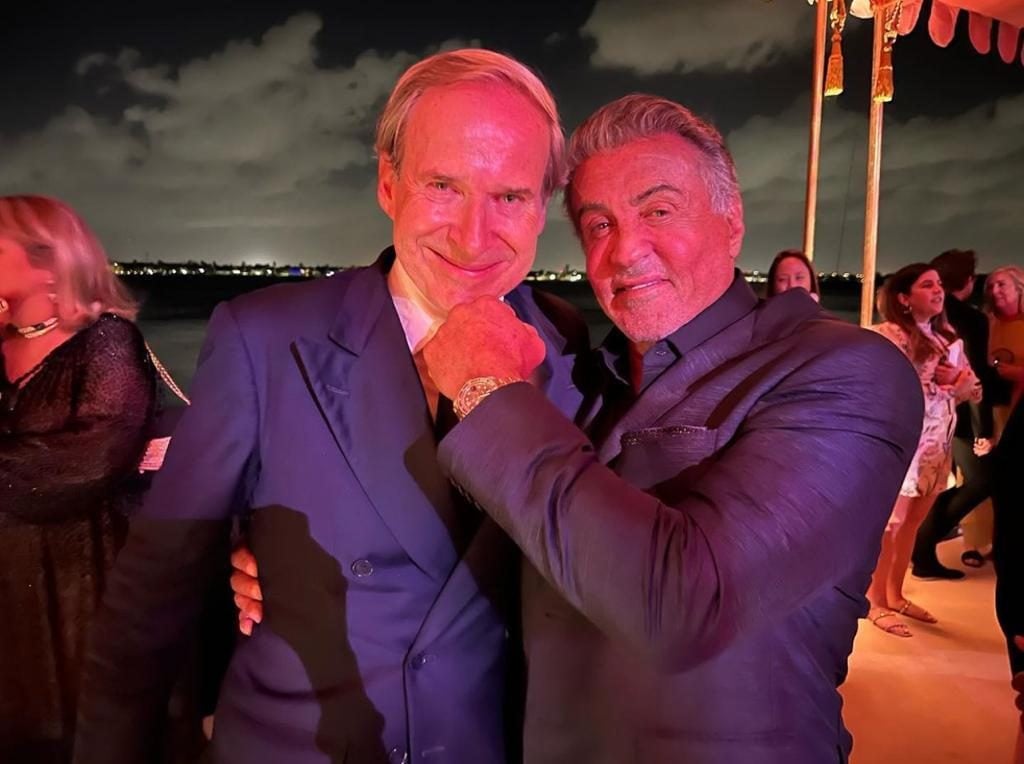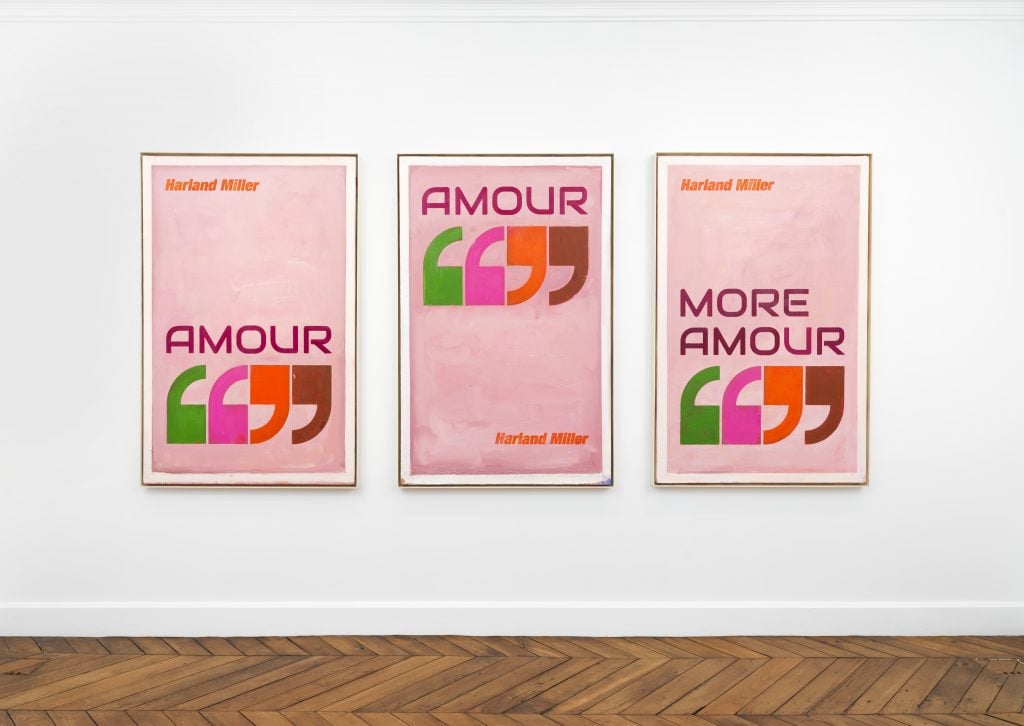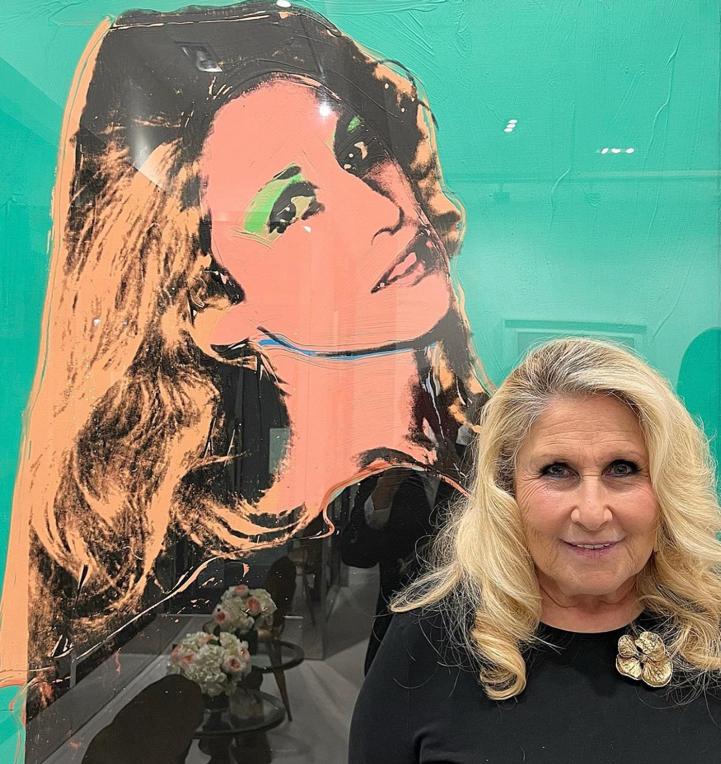The Hammer
After Being Snubbed by Front Desk Associates at Palm Beach Galleries, Simon de Pury Reflects on the Psychology of Dealing
The auctioneer wonders why some commercial galleries appear loathe to sell their art.

The auctioneer wonders why some commercial galleries appear loathe to sell their art.

Simon de Pury

Every month in The Hammer, art-industry veteran Simon de Pury lifts the curtain on his life as the ultimate art-world insider, his brushes with celebrity, and his invaluable insight into the inner workings of the art market.
A month ago I was in Palm Beach to conduct the inaugural amfAR auction that was held at the spectacular home of contemporary art collectors Amy and John Phelan.
This was my first visit to Palm Beach in well over 30 years. I had last been there in my days as curator of Baron H.H. Thyssen-Bornemisza’s collection, which is now permanently housed in the magnificent Museo Thyssen-Bornemisza opposite the Prado in Madrid. In 1986 I had come to give a lecture at the Society of the Four Arts on the occasion of that institution’s 50th anniversary, and the opening of an exhibition of 115 American Masters paintings from the baron’s collection.
I make of course the annual pilgrimage in early December to Miami Beach ever since its first edition that was started by Sam Keller in 2002. Each year allows you to witness the total transformation of booming and bustling Miami. My first impression, arriving in Palm Beach after so much time, was that it was a time capsule in which nothing had changed at all. A drive along South Ocean Boulevard, where all the magnificent houses, built mostly during the 1920s, are located, and a stay at the Breakers only fortified that feeling.

Harland Miller, Amour, Amour, More Amour (2021). ©Harland Miller. Photo ©White Cube (Fabrice Gousset).
The amfAR auction itself was a great success with eight world record prices achieved out 14 works, including works among others by Vaughn Spann, Harland Miller, and Leo Villareal that had been generously donated by the artists as well as the gallerists representing them: Almine Rech, White Cube, and Pace.
On the Sunday following the auction, I took a stroll down Worth Avenue and also went to the super chic shopping center the Royal Poinciana Plaza. To my great surprise I saw many prestigious international galleries that had opened in Palm Beach either permanently or as pop ups during the pandemic.
London gallery owner Ben Brown had a great exhibition entitled “Homage to Jane Holzer: Andy Warhol and Les Lalanne.” It included two of the great portraits Andy Warhol did of “Baby” Jane Holzer, who starred in many of Warhol’s movies, such as Soap Opera, Couch, and Camp. Incidentally, I binge watched last week the Andy Warhol Diaries on Netflix, which I totally loved. This, plus the imminent sale of Shot Sage Blue Marilyn, which is expected to pulverize all records when it comes up for auction at Christie’s in New York in May, is putting the artist firmly back on center stage.

“Baby” Jane Holzer in front of one of the portraits Andy Warhol did of her. Photo by Simon de Pury.
Back to Palm Beach. Opposite Ben Brown Fine Arts, there is Lehmann Maupin that was showing new work by Osgemeos, the Brazilian street art stars. Nearby, Dylan Brant was showing an extraordinary exhibition with top works by Karen Kilimnik and haute couture from the collection of his mother Stephanie Seymour. While walking through the elegant Poinciana shopping center, I saw to my great surprise that Acquavella Galleries had opened there. Seated at the desk was Eleanor Acquavella Dejoux presiding over an exhibition of new work by Miquel Barcelo. Her friendly presence oozes professionalism, competence and expertise. The apple clearly did not fall far from the tree, since she is the daughter of the great Bill Acquavella, and together with her two brothers represents the third generation of that august art firm.
Next I walked into Pace Gallery which had also opened a space there. I was particularly excited as they were showing new work by Loie Holowell, an artist that I have been following with great interest. I loved the work and wanted to know when the exhibition had opened.
I went to the desk and asked the young man who was sitting there. I had the feeling that I was really disturbing him. Looking at me with an air of contempt and arrogance he told me it had opened only three days earlier. I know, of course, that miracles don’t happen every day but nevertheless proceeded to ask him if any paintings were still available to purchase. Again, he gave me the impression that I was really wasting his time and said they had all been sold before the exhibition started. I wasn’t going to ask him to put me on a waiting list, not to incur his snotty attitude for a third time. His evident lack of belief I could ever be a client of interest annoyed me so much that I told him that it had been a real pleasure to see Marc Glimcher, the brilliant President of CEO of Pace, the night before. That had zero effect in altering his demeanor.

Ben Brown and the Andy Warhol portrait of Mariana Vardinoyannis. Photo by Simon de Pury.
Quite depressed, I left Pace and walked into Gavlak, the next gallery nearby. Gavlak had very kindly facilitated the donations of works by Nir Hod and Jose Alvarez (D.O.P.A.) to the amfAR auction. There was an exhibition titled “FriendsWithYou.” It consisted of works done in vividly colored plasticine of cheerful cartoonish figures like Pokémon.
Not being familiar with the work I asked the lady sitting at the desk what was the name of the artist, not realizing that FriendsWithYou is actually the name of the artist. She also seemed extremely annoyed to be interrupted in whatever she was doing, and in a tone of “I definitely don’t want to be friends with you,” answered: “FriendsWithYou.” It is only while googling that I learnt that FriendsWithYou is an art collaboration of Samuel Borkson and Arturo Sandoval III.

Worth Avenue Palm Beach. Photo by Simon de Pury.
Reflecting on these two experiences that are by no means isolated or limited to Palm Beach made me wonder whether this attitude is actually a conscious selling technique. I always considered the art market to be part of the service industry, but being overly kind and helpful can occasionally have the opposite effect.
There is at least one highly successful and important dealer who is known for simply ignoring some of his super affluent potential clients. They are then so keen to not only get noticed by him, but invited to his events, that they immediately start acquiring important works from his gallery. He then suddenly morphs into the most charming man in the universe. This of course lasts only as long they keep on buying. The reverse psychology in play reminded me of an experience with a wealthy acquaintance with whom I was once trying to get into a nightclub. When the bouncer initially appeared reluctant to let us in, he said: “I am going to buy this club.”
Having over the years been active both as an auctioneer and as a private dealer, I was always struck by the two very different psychologies that are at play in these two ways of selling. I intend to devote my next column, when I return from visiting the Venice Biennale, to that topic.
Simon de Pury is the former chairman and chief auctioneer of Phillips de Pury & Company, former Europe chairman and chief auctioneer of Sotheby’s, and former curator of the Thyssen-Bornemisza Collection. He is now an auctioneer, curator, private dealer, art advisor, photographer and DJ. Instagram: @simondepury